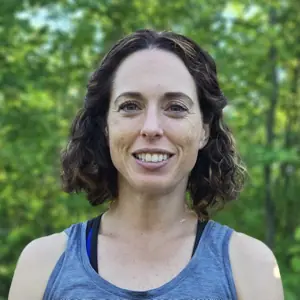Are humans natural explorers? Author and science journalist Alex Hutchinson tackled this question in his latest book, “The Explorer’s Gene.” It has parallels to his 2018 book, “Endure,” as well as Dave Epstein’s “The Sports Gene,” all of which consider the ways “nature” and “nurture” contribute to elite athletic performance.
Hutchinson’s newest book incorporates historical and scientific research to explain why, how, and to what benefit we pursue new frontiers, in their many forms. He offers personal reflections on exploration, too, including a family hike in Gros Morne National Park in Canada and a team orienteering competition he entered when he needed a break — and a new challenge — after years of blazing fast track and road running.
As I read the book, I wondered how many trail runners have similar origin stories to Hutchinson. Ok, few of us have run 13:52 in the 5,000 meters. But plenty of trail runners have backgrounds in track and road running before seeking the novelty of new distances, elevation profiles, and terrain types.
For this month’s column, I took a sample set of data from the DUV Ultra Marathon Statistics database to consider how trail runners “explore” different events, distances, and race locations. Since Hutchinson, our inspiration here, lives in Toronto, Canada, I used for my dataset the 232 finishers of the 2025 Sulphur Springs 100k, which takes place in the same general region of Canada (1). There are so many ways to explore as a trail runner, so my focus on race results will not capture how runners explore through training runs, running adventures, or fastest known time attempts. Nor do I have a complete picture of each person’s experience outside of trail running. For example, Canadian Olympian Krista DuChene was among the finishers of the 2025 Sulphur Springs 100k, but her road racing experience isn’t captured in the DUV database.
Trends in the Dataset
I started by looking at the variety of race formats that Sulphur Springs 100k finishers had collectively completed. The chart below shows a selection of the distances and formats represented, though I excluded some niche distances that had only been completed by a single individual, such as the Badwater 135 Mile or Transgrancanaria 128k. The runners have collectively explored a variety of distances, with 50-kilometer races being the most popular.
Chart Showing Event Breakdown by Distance
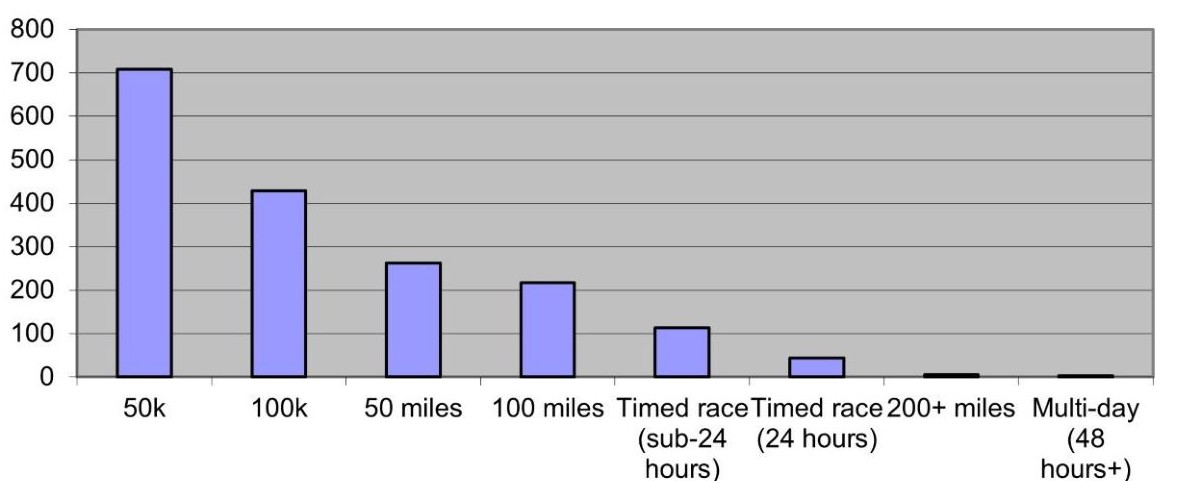
The bar chart above shows the 232 finishers of the 2025 Sulphur Springs 100k collectively had the most finishes in 50k races, with 100k, 50-mile, and 100-mile distances being other popular options.
Notably, 43 runners (18%) appeared to be exploring trail running and ultrarunning through the very act of completing the Sulphur Springs 100k. For these runners, the Sulphur Springs 100k was their first or only result in the DUV database, suggesting it was possibly the first ultramarathon they completed.
Exploring was also evident in the geographic sense. Among the 232 runners in the dataset, 95 (41%) had raced in another country. The most common race locations outside of Canada were the United States and Europe. The U.S. was an unsurprising leader considering its proximity to Canada. Americans were a sizable minority (13%) of the race finishers, so it tracks that other ultra finishes included plenty of U.S. races.
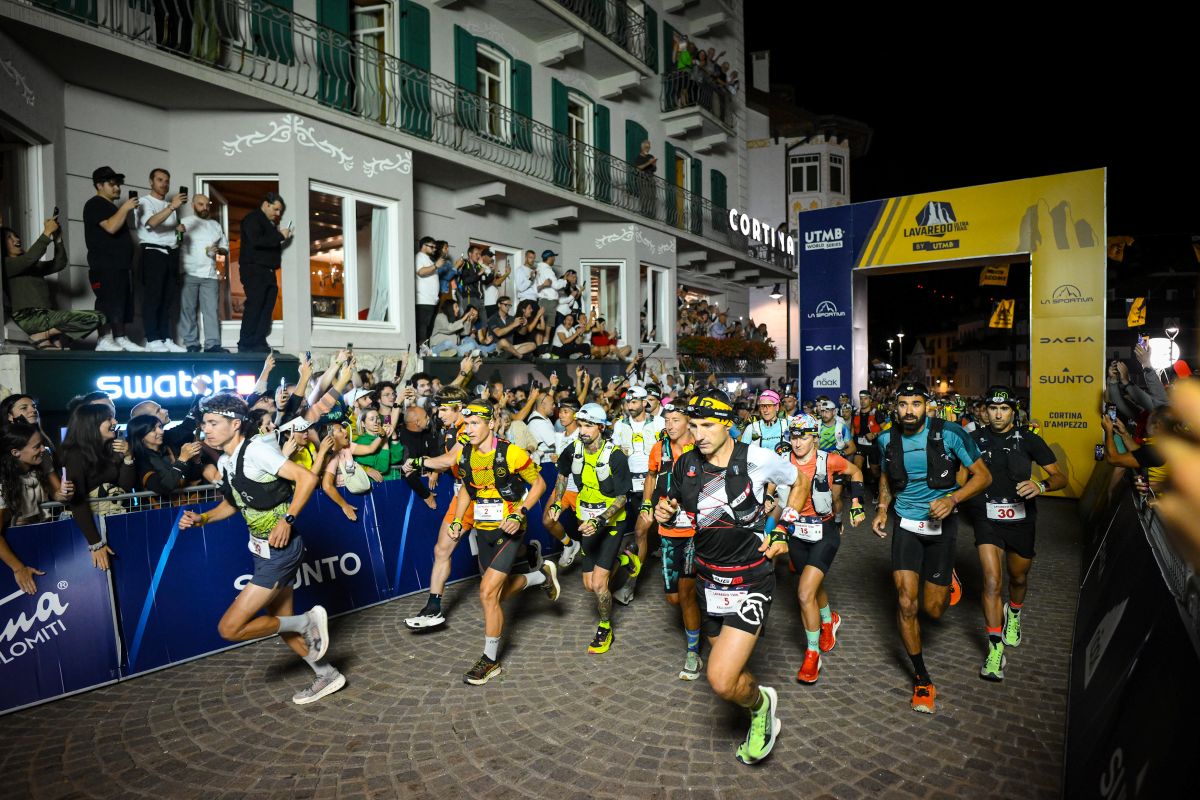
The start of the 2025 Lavaredo Ultra Trail, which is a popular European destination race. Photo: UTMB World Series
Finally, my dataset indicates the 232 finishers had collectively completed 552 different events. This figure may be inflated if any events changed their names over the years, but it nonetheless indicates those runners with more than one ultra finish sought out some — or lots of — variety.
But, as I’ve said before, I have a lot of respect for runners who test themselves by returning to the same event more than once. Comparing our fitness against previous versions of ourselves can be another version of exploring, and there were Sulphur Springs finishers who likely share that view. A few examples I observed in the data were: Karen Holland, who has two finishes at the Diez Vista 100k; Mark Carey, who has two finishes at the Bromont Ultra 160k, and Jordan Bierema, who has run the Sulphur Springs 50k six times and the race’s 100k event twice.
Unexpected Findings
Of course, as Hutchinson makes clear in his book, exploration can take many forms. It isn’t limited to racing frequently, or in exotic locales. As I see it, exploring can also look like: Signing up for your first ultra, getting a DNF because you tested — and found — the limits of your endurance, returning to racing after time away, returning to the same race to improve upon your time, deliberately gaining experience on new types of terrain, running a new route, trying to adhere to a training plan when life gets crazy … the list goes on.
For me, the pleasant surprise in this analysis was seeing how many runners explore trails within their home province or region with the occasional ultramarathon. It was a welcome counterweight to the FOMO and upward social comparison often facilitated by social media. For example, did it feel to you like everyone was at the Western States 100 this year? Well, most runners in my sample dataset have never raced in the U.S. and 75% of these runners haven’t completed a 100 miler.
And does it feel as though everyone else races often, when your family has to juggle the logistics of childcare so you can spend a day at a local race? In reality, just 12% of this year’s Sulphur Springs 100k finishers average more than two ultramarathons per year, as the graph below indicates.
This is consistent with “UltraRunning Magazine’s” 2024 participant statistics, which showed 51,573 runners had a combined 68,228 ultramarathon finishes in North America — that works out to 1.32 finishes per runner, a figure that may increase modestly when races on other continents are considered.
Chart Showing Average Ultra Finishes per Year, per Runner
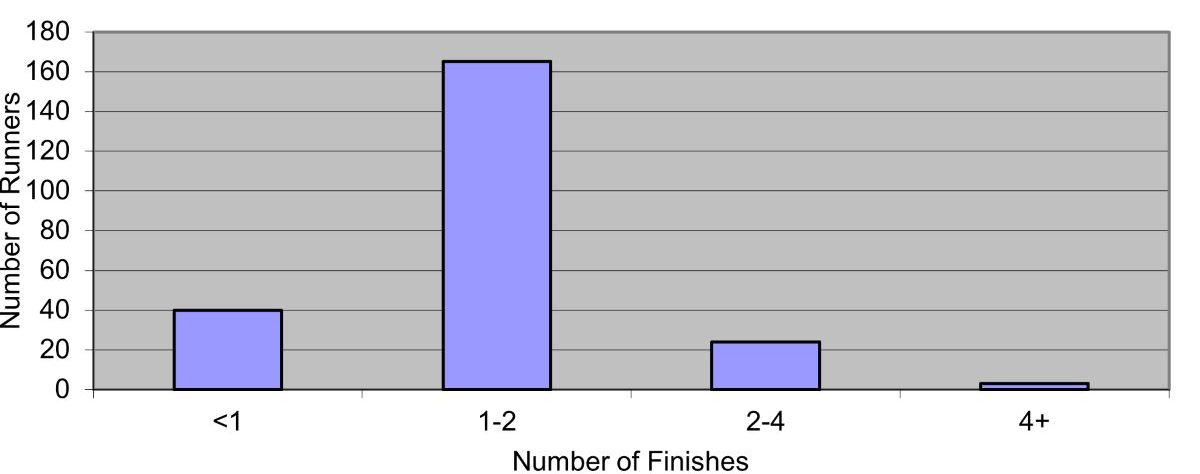
Chart showing the number of ultra finishes per year logged by finishers of the 2025 Sulphur Springs 100k.
Does it feel as though everyone is racing internationally? Only a minority of runners in my dataset have done so, and 32% of those runners are Americans who had traveled to Canada for this very race. Traveling for this established race (a Western States 100 qualifier), which takes place within 100k of the U.S. border and where the currency exchange rate favors Americans, has understandable appeal for a number of American runners.
But even among the percentage of Canadian runners who have participated in ultramarathons internationally in previous years, the number doing so in 2025 may be lower. I calculated the number of international runners (and Canadians specifically) on the starting list for several U.S. ultras in 2025, including a number of the largest events as well as events in states along the Canada-U.S. border. Canadian participation rates, and international participation rates more broadly, were generally down from the previous year.
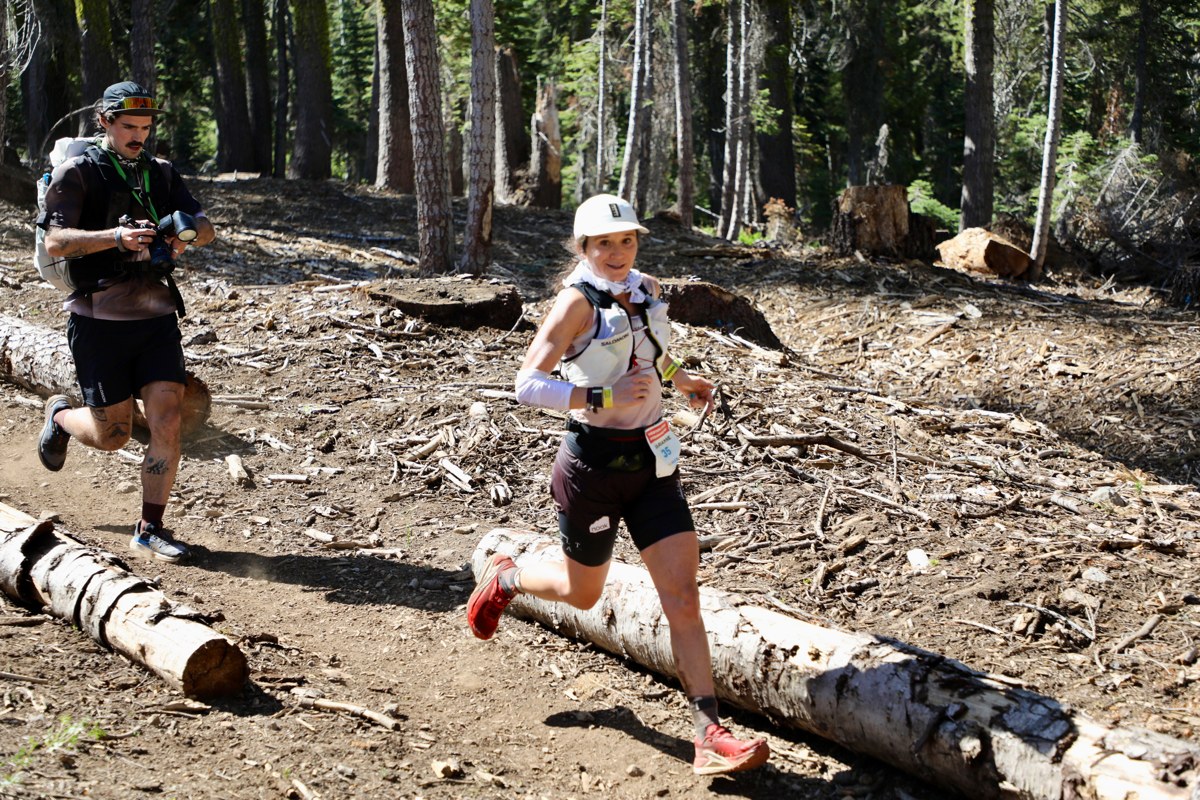
Canada’s Marianne Hogan striding out in the high country at the 2025 Western States 100. Photo: iRunFar/Bryon Powell
Even in the 2022 survey results for the Trail Ultra Project, runners with international racing experience were in the minority at 29%, despite drawing from volunteer survey respondents, who were more likely to be passionate ultrarunners, as assessed by their awareness of and willingness to complete the survey (2).
Does it feel as though everyone is running super-long races of 200 miles or more? The exciting media coverage of the 2025 Cocodona 250 Mile certainly increased awareness of these events, but they are still very niche. Only six of the 1,927 race results in our dataset were for races of this format. Only 0.3% (505 of 145,186) of the North American ultra finishes recorded by “UltraRunning Magazine” for 2024 were 200 milers (3).
Closing Thoughts
I think trail running and ultrarunning are wonderfully conducive to exploring new places, new challenges, and our physical and mental limits. The data suggests I’m not the only runner who feels this way. Looking at this month’s data set, we see there isn’t, however, a narrow definition or single blueprint for how to explore in the sport. The beautiful and sometimes frustrating thing is that we get to figure it out for ourselves.
Call for Comments
- If you’ve already read Alex Hutchinson’s “The Explorer’s Gene,” what’s your take on it?
- Does the data presented here reflect your own experience or observations at races?
- How do you explore, either within or beyond the context of ultramarathon races?
Notes/References
- There may be a few readers of this piece who will emphasize that Hamilton is not part of Toronto, and therefore take issue with me describing the race location as being in “the same general region” as Toronto. For those readers, please keep in mind that I live in Winnipeg, almost halfway across the continent. For me, if a race is within a four-hour drive of where you live, it’s in your region.
- Source: https://www.trailultraproject.com/survey
- Source: https://ultrarunning.com/calendar/stats/ultrarunning-finishes

